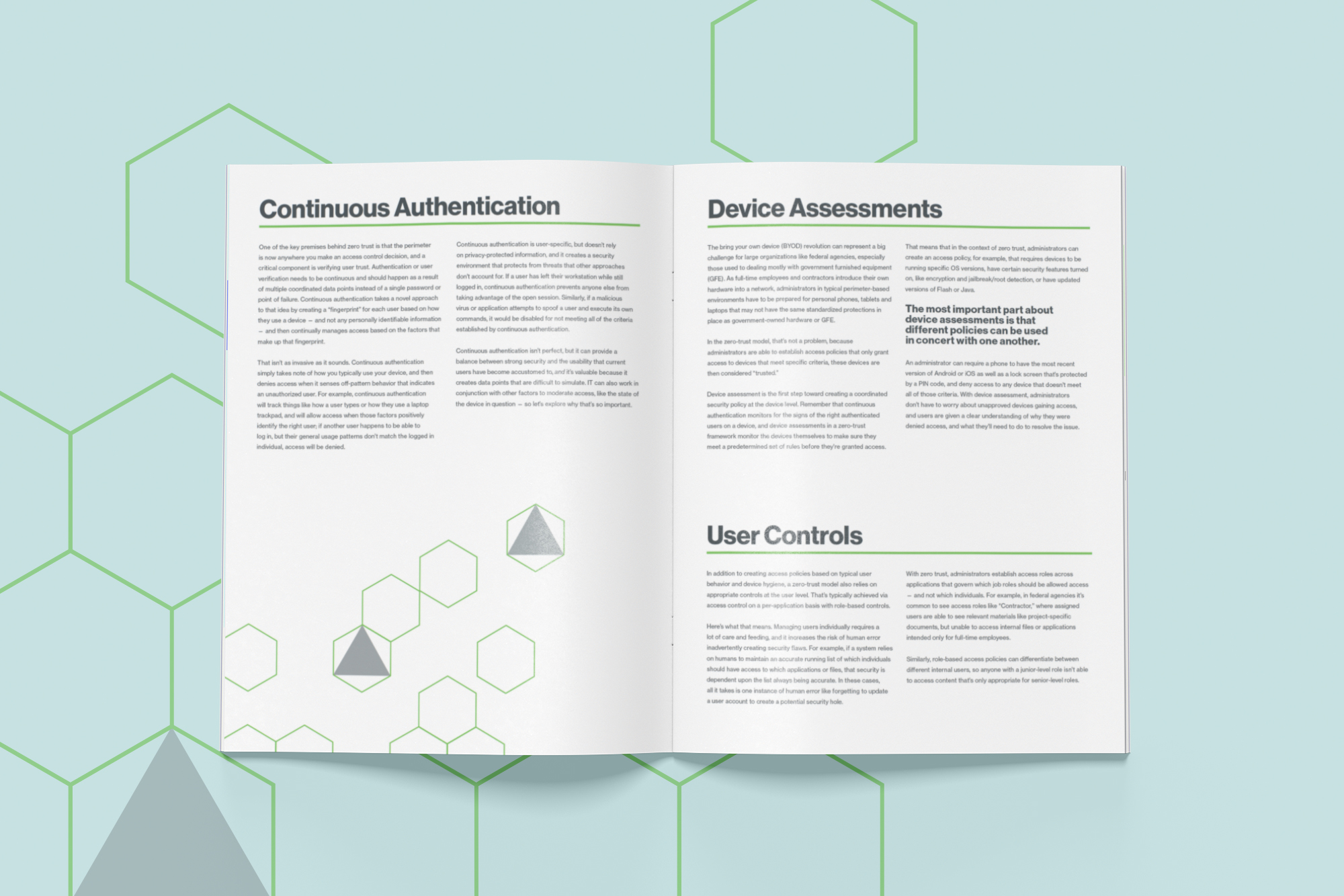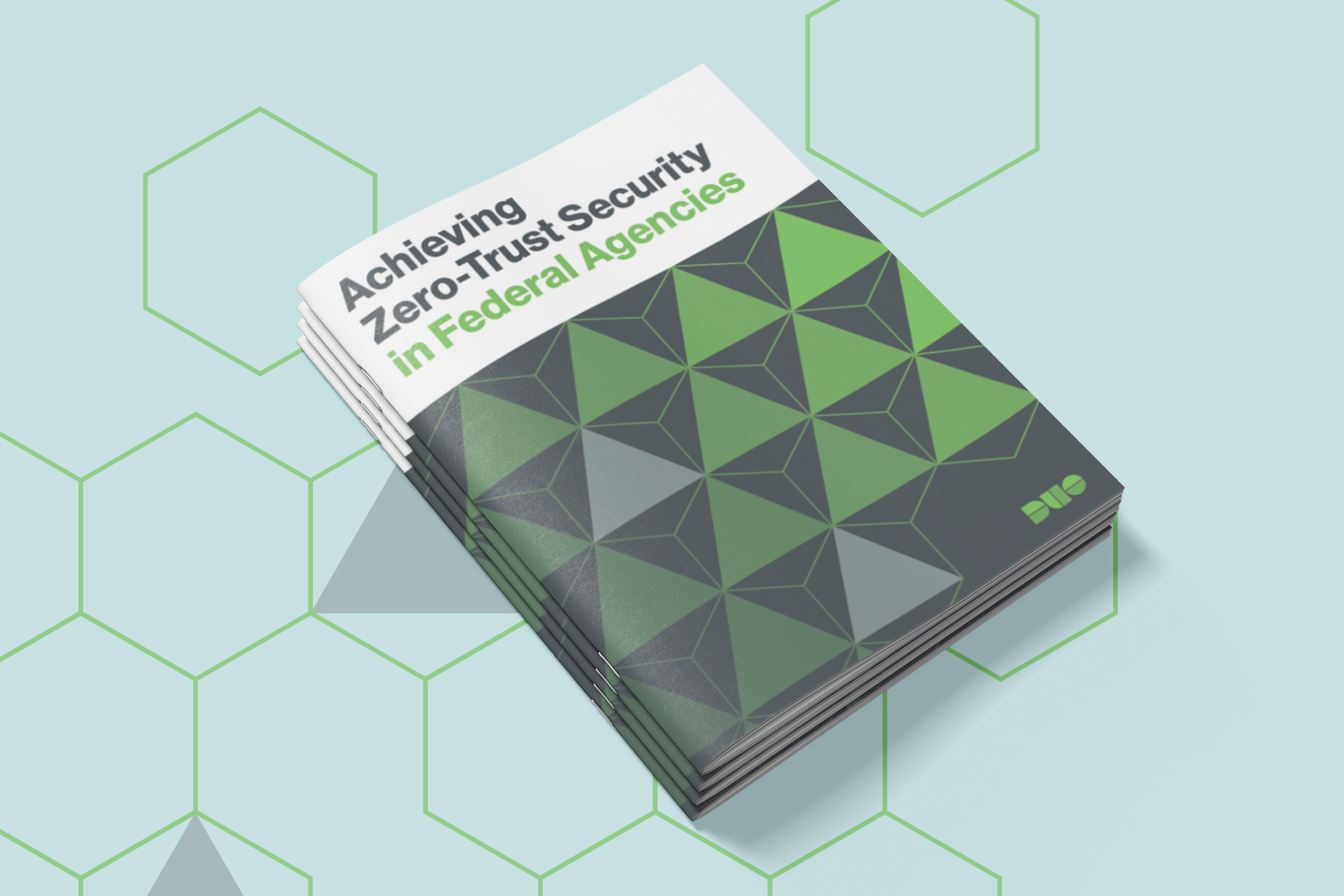Achieving Zero-Trust Security in Federal Agencies
This guide examines:
- The role a zero-trust security model plays in federal IT modernization efforts
- Why verifying user trust through continuous authentication is the first step on the path to zero trust
- How device assessments help agencies overcome the challenges of bring your own device (BYOD) by offering insight into user-owned devices
- The benefits of setting access policies based on user roles
- How a zero-trust model ensures secure access to all applications – cloud and on-premises
While the concept of zero-trust security is well over a decade old, it’s currently riding a wave of popularity, largely due to Google’s BeyondCorp architecture. With zero trust, the access conversation shifts from traditional perimeter-based security and instead focuses on secure access to applications based on user identity, the trustworthiness of their device and the security policies you set, as opposed to the network from where access originates.
While federal agencies have not necessarily been known for their agility when it comes to IT, modernization initiatives fueled by cloud and mobility make it prime time to consider the shift to zero trust.
There are four underlying methods that can be coordinated to help federal agencies achieve zero trust. In this guide, we examine each of them.


